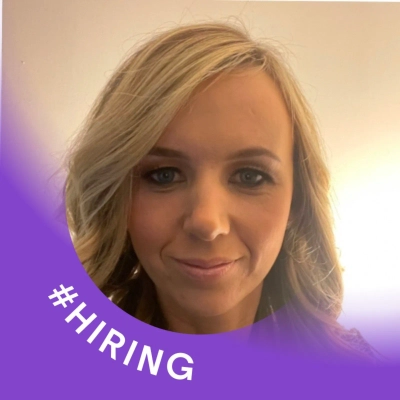How to Foster Continuous Improvement in Your Organization
Continuous improvement is a vital strategy for organizations seeking to stay competitive and innovative. This article presents expert insights on fostering a culture of ongoing enhancement within your company. From leadership practices to team-based approaches, discover actionable methods to drive sustainable growth and excellence in your organization.
- Model Continuous Improvement Through Leadership Behavior
- Implement Post-Mortem and Pre-Mortem Practices
- Use Structured Behavioral Nudging for Accountability
- Frame Development as Achievable Growth Opportunities
- Hold Regular Team Retrospectives for Ongoing Improvement
- Encourage Weekly Sharing of Individual Improvements
- Apply the 5% Rule for Incremental Progress
- Review Customer Projects to Drive Innovation
- Align Decisions with Cultural Values
- Conduct Monthly Project Reviews for Team Learning
- Share Lessons from Unusual Jobs or Complaints
- Balance Problem-Solving with Celebrating Successes
- Host Weekly Wellness Roundtables for Care Improvement
- Organize Structured Peer-Learning Circles for Growth
- Implement Pulse Check Sessions for Community Feedback
- Use Clarity Checks for Peer-to-Peer Learning
- Run Data-Driven Weekly Performance Reviews
- Blend Internal Learning with Industry Involvement
- Showcase Improvements in Team Standups
- Create an Idea Marketplace for Democratic Innovation
- Hold Weekly Cross-Functional Planning Meetings
- Adopt Best Practices from Competitors and Industry
- Link Improvement to Meaningful Community Impact
- Conduct Regular Check-Ins with Team Members
- Empower Employees Through Efficiency Huddles
Model Continuous Improvement Through Leadership Behavior
"If you want better results, start with culture."
This simple belief supports the fact that continuous improvement isn't a task on a to-do list; it's a way of thinking, learning, and leading. And it starts with one essential truth: your leadership team is your culture team.
They are the Chief Culture Officers, and their behavior sets the tone for whether your organization plays it safe or grows with intention. To build a culture that thrives on learning and progress, leaders must model what continuous improvement actually looks like: embedded learning, real-time feedback, and a deep belief that failure is simply a first attempt in learning.
At Loden Leadership, we coach and consult with organizations to build this kind of culture from the inside out. It begins by creating an environment grounded in trust, where people feel safe innovating, trying new ideas, and speaking up about what's getting in the way.
It also starts with your current team. We remind leaders that many new hires are coming from environments where the culture was punitive or reactive. When you bring those individuals into a high-trust, growth-minded team, your onboarding process becomes a critical first opportunity to reinforce: "Here, we do things differently. We learn. We grow. We improve together."
Hiring isn't just about skill; it's about protecting and enhancing your culture. One of the most overlooked elements of continuous improvement is hiring and onboarding with culture in mind.
One practice we help organizations revive is what I call modern quality circles, listening sessions rooted in humility and curiosity. The people closest to the work know where the friction lives. They know the hidden inefficiencies, the outdated processes, and the opportunities to improve. Leaders must regularly go where the work is happening and create space for real feedback.
Finally, we stress the importance of piloting small. Test before you scale. When teams know they're allowed to experiment without fear, innovation increases and so does engagement. This approach allows for controlled innovation where teams can explore new ideas in low-risk environments while gathering feedback that sharpens clarity and strengthens alignment. As a result, full-scale implementation becomes more effective, efficient, and widely supported.
Continuous improvement is not a one-time initiative. It's a living culture, built by leaders who are willing to listen, learn, and lead from the ground up.

Implement Post-Mortem and Pre-Mortem Practices
At Level 6, continuous improvement isn't a slogan we hang on a wall. It's something we live out by making curiosity part of our culture. I always tell my team: if you're not asking "How could this work better?", you're missing the point. One practice that's been incredibly effective for us is what we call our "post-mortem, pre-mortem" rhythm. After we wrap up a project, we dig in, not just into what went wrong, but what went right and why. We turn those lessons into concrete next steps. Then, before we kick off a new initiative, we do a pre-mortem where we imagine what could derail it and how we'd respond. This habit builds resilience into our process and helps us avoid costly missteps. Over time, it's trained us to think ahead and reflect back, which keeps us sharp. And because we work in incentives and performance improvement, we try to walk our talk. We recognize team members not just for results, but for sharing ideas that improve how we work. When people feel that their voice matters and their thoughts shape the business, they engage differently. That's when real improvement happens, not as a one-off, but as a mindset.
Use Structured Behavioral Nudging for Accountability
At ReliablyME, we're obsessed with turning reflection, accountability, and recognition into everyday habits - not some quarterly ritual or once-a-year performance review thing. It must be baked into the daily rhythm. Otherwise, it just doesn't stick.
One practice that has made a significant difference for us is structured behavioral nudging, paired with commitment tracking. It sounds clinical, but in reality, it's surprisingly human. Everyone on the team gets regular prompts. For example: "What did you finish this week? What's next? What's tripping you up?" These are simple questions, but mapped to actual workflows like onboarding or team delivery.
And here's where it clicks: responses to these nudges are tracked, acknowledged, and folded back into the loop. Not just to keep score, but to build momentum. You say you'll do something. You do it. People notice. Or maybe you hit a snag; you flag it early. That visibility is gold.
One of my favorite prompts we use regularly is:
"What did you do this week that reflects Radical Accountability? Who did you help? What do you still need help with?"
That one's a culture engine. It nudges people to think beyond their own to-do list. You start spotting blockers early. Helping each other out; naming what's working and what's not. It's low-key and powerful.
Over time, these micro-behaviors stack up into a pattern. And that pattern is data. Data we can use (without spying on anyone) to spot trends, improve how we onboard, shift how we run projects, and even shape how managers coach. All with minimal friction.
So yeah, it's not just about collecting commitments. It's about building a system that breathes, learns, and grows - from the inside out.

Frame Development as Achievable Growth Opportunities
Fostering a culture of continuous improvement at work begins with semantics. While the phrase may be accurate, it can sound clinical and exhausting, as if employees are being asked to carry an endless workload. At Perpetual Talent Solutions, we instead frame development as "stop-start," achievable growth through capsule or contract-style learning programs. These are short-term initiatives with clearly defined goals and firm boundaries. People are far more motivated to commit when they know what success looks like and when the project ends. We also keep our messaging focused on opportunity rather than obligation. These two subtle shifts in language make a significant difference.
Of course, language only works when the experience itself delivers. That's why we focus on short, high-impact upskilling sessions that employees can apply on the job immediately. Peer learning is another key part of our model -- encouraging team members to share progress, swap ideas, and even teach one another. Internal showcases and collaborative workshops make the process feel exciting and communal, not top-down or abstract.
Ultimately, our goal is to embed development into the rhythm of our culture in a way that feels self-directed and fun, but most importantly, achievable.

Hold Regular Team Retrospectives for Ongoing Improvement
As a leader, I believe fostering a culture of continuous improvement starts with creating an environment where feedback, learning, and experimentation are encouraged and celebrated. People need to feel safe sharing ideas and trying new approaches without fear of failure.
One effective practice I use is holding regular "retrospectives" with my team — not just after big projects, but as an ongoing habit. In these sessions, we openly discuss what worked, what didn't, and what we can improve, with everyone contributing. We focus on solutions rather than blame, and we always document actionable takeaways.
This practice has helped us identify small, meaningful changes — whether in workflows, communication, or strategy — that add up over time. It also empowers the whole team because they see that their insights lead to real improvements.
By making improvement part of our routine, rather than an occasional exercise, we've been able to stay agile, boost engagement, and achieve better results as an organization.

Encourage Weekly Sharing of Individual Improvements
We keep continuous improvement simple and part of our weekly rhythm.
Every Friday, each team member shares one thing they improved or learned that week. We call it "One Thing Weekly." It's short, casual, and consistent.
This works because:
1. It keeps improvement top of mind without pressure.
2. It encourages sharing across roles, not just technical teams.
3. It helps us learn from each other in real time.
The takeaways are honest. Sometimes it's a small code fix. Other times it's a better way to run a meeting or give feedback. There's no scoreboard. Just progress.
What makes it stick is the repetition. No tools, no reports—just a five-minute check-in. Over time, people start thinking differently: "What did I improve this week?"
That shift in mindset is what creates a real culture of growth, not just a policy.

Apply the 5% Rule for Incremental Progress
It starts with setting the tone myself—if I'm not openly improving, listening, and tweaking, then I can't expect anyone else to. One thing that's worked surprisingly well at Spectup is what we call our "5% Rule." Each week, everyone is expected to find something—anything—that can be made 5% better. It could be the way we structure a pitch deck, how we follow up with investors, or even a Slack message template. There's no need for perfection or sweeping change. Just small, thoughtful tweaks that compound over time.
I remember one of our team members quietly reworked our initial discovery call questions. It was just a minor shift in phrasing, but it led to richer conversations, and we started spotting red flags in clients much earlier. No big memo, no formal training—just quiet, shared progress. When people see their tiny improvements become part of how Spectup runs, they realize they have agency. That sense of ownership fuels everything else.

Review Customer Projects to Drive Innovation
We implemented "Floor Friday" sessions where our entire team reviews one customer project from start to finish, identifying what went perfectly and what could improve. Last month, our installer noticed that customers seemed confused during the acclimation period explanation, so we created a simple visual timeline card they could take home. This small change reduced follow-up calls by 60% and improved customer satisfaction scores. When every team member feels empowered to suggest improvements based on real customer interactions, innovation happens naturally and everyone takes ownership of our service quality.

Align Decisions with Cultural Values
For me, continuous improvement is a discipline built into daily decisions. One thing that helped us stay grounded as we scaled was treating culture as an ongoing practice, not a poster on the wall. Early on, I saw how fast things can shift when you're hiring quickly. So before bringing in someone new or rolling out a change, I always ask myself: Does this decision reflect how we really work, not just how we say we do? That small habit has helped us stay aligned, even during periods of fast growth.
Another practical shift was building more transparency into how we work, especially across time zones and functions. We put effort into writing things down — clear processes, decisions, updates — so no one is left guessing or chasing context across messages. It's not flashy, but it's made onboarding smoother and helped us avoid the usual growing pains. In my experience, a culture of improvement is about being honest about what works and making those small improvements stick.
Conduct Monthly Project Reviews for Team Learning
Fostering a culture of continuous improvement at Ozzie Mowing & Gardening comes down to staying curious, being open to change, and never thinking we know it all. With over 15 years of experience and a background in horticulture, I've learned that gardens, like people, are always evolving. That mindset flows through to how I lead my team. One practice I rely on is our monthly project review sessions. These aren't just about looking back at what went wrong but focusing on what we can learn from each job, what the client responded well to, and where we can fine-tune our techniques. Whether it's improving our plant selection based on microclimates or finding more efficient ways to maintain a formal hedge, we use these sessions to bring theory and hands-on experience together. Because I've worked on over 700 projects, I'm able to bring a broader perspective to these reviews, showing the team how small adjustments can lead to much better results over time.
A strong example is when we were asked to restore a neglected native garden in Melbourne's outer east. Based on my horticultural training and practical experience, I knew the importance of working with the soil profile first before touching any plantings. I trained the team on identifying compaction issues and how to amend the soil without damaging existing root structures. That job ended up winning us a customer service award because the client was blown away by how healthy and balanced their garden became within months. That outcome wasn't just about doing the job right. It came from a team that understands why things work the way they do, thanks to a culture where learning and sharing knowledge is part of what we do every day.
Share Lessons from Unusual Jobs or Complaints
One thing we do at PCI that has really been effective is the "What'd We Learn?" review after any unusual job or customer complaint. It's not formal—it's usually just five minutes during a morning meeting—but we let the technician who handled the call walk us through what happened and what they would change. There's no finger-pointing. The goal is sharing what we can all use next time. It has become part of our rhythm, and the team actually looks forward to it now.
I remember one instance where a customer was upset that we left a gate open, which may seem minor, but it sparked a great conversation. One technician shared how he clips his keys to the gate latch as a reminder. We all adopted that small technique, and it has reduced complaints like that to nearly zero. It's these small tweaks, shared openly, that make the whole team more effective—and it only works if people feel safe being honest.

Balance Problem-Solving with Celebrating Successes
In an industry focused on risk and compliance, it's easy to focus only on problems. However, at Bell Fire and Security, we also make space to highlight what's working. Weekly, we celebrate wins throughout the team, client compliments, jobs that turned out great, improvements in processes, or even minor fixes that improved someone's day. These instances serve to reinforce a sense of progress and make our culture of improvement more encouraging and tangible.
We also monitor improvements through a shared improvement log, where employees note what's been changed, why, and what the outcome was. It may be a change in the way we stock vans, a redesign in how we dispatch engineers, or an adjustment to onboarding forms. Seeing those rows add up year after year is a great reminder that small things make big differences. It also keeps us from having to reinvent the wheel; what someone has already attempted can be observed, and whether it worked or not.
Savoring those successes doesn't mean that we don't manage problems; of course, we still run audits, reviews, and compliance spot checks. But we balance that with learning-not-blame. That flexibility has allowed us to flex and stay adaptive without sacrificing the standards to which we hold ourselves accountable.
When your people feel appreciated for what they're contributing and can see their ideas come to life, they'll be more apt to keep contributing. That's the way we've improved a daily process, not something we talk about during quarterly performance reviews.

Host Weekly Wellness Roundtables for Care Improvement
It's how we grow, as a team and as people. When someone walks in dealing with chronic pain or recovering from surgery, they're often overwhelmed, frustrated, and just hoping to feel like themselves again. That's why we've created a space where our team is always learning, asking questions, and finding better ways to help.
One practice that's been especially effective is something we call wellness roundtables. Every week, our staff, from physical therapists to support team members, gathers to talk about what's working and what needs to change. These aren't formal meetings. They're real conversations about real people—what progress we're seeing, what tools we can improve, and how we can make care more personalized. It keeps us connected and accountable, and it reminds us why we're here in the first place.
A while back, we had a patient who was recovering from surgery but felt stuck physically and emotionally. In one of our roundtables, a team member suggested pairing their rehab with guided breathing sessions to ease their anxiety. We tried it, and it completely changed their recovery experience. That small shift came from a team willing to listen and try something new.

Organize Structured Peer-Learning Circles for Growth
At Pepine Realty, we believe that growth is most powerful when it's shared. One of the ways that we create a culture of continuous improvement is through structured peer-learning circles. Our monthly sessions bring together agents and staff members of all levels of experience to sit down and share openly about real-life triumphs, failures, and lessons learned in the field. Whether it's navigating a difficult negotiation, experimenting with a new marketing approach, or exhibiting some surprise client service, all of the anecdotes are learning opportunities for the whole team.
What differentiates these sessions is the collaborative energy that they bring. The team members take turns acting as facilitators, encouraging ownership and participation at every level. We also consciously pair new agents with more experienced professionals to encourage cross-pollination of learning and mentoring. Everyone leaves the circle with a minimum of one actionable lesson, and oftentimes, with fresh enthusiasm.
Along with developing technical expertise, these peer communities also reinforce our shared values of community, integrity, and excellence. They're a place to share feedback, ideas, and successes, showing that we grow as a team. In a busy industry, these talks help us stay flexible, work well together, and serve our clients and community better.

Implement Pulse Check Sessions for Community Feedback
Continuous improvement isn't something we talk about in meetings and forget the next day; it's something we live every single day. When we first started, we realized people were exhausted trying to piece together a fitness routine that actually worked, bouncing between strength studios, cardio classes, and maybe squeezing in recovery if they had time. We thought, what if we could bring all of that together in one place and do it in a way that felt good not just physically but emotionally too? That idea still drives everything we do.
One thing that's helped us stay grounded in that mission is something we call pulse check sessions. These aren't surveys or formal reviews; they're casual, face-to-face check-ins we do with our team and members. It could be a conversation after class or a group huddle between coaches. We ask real questions, and more importantly, we listen. One member told us she loved our strength classes but was struggling to recover after an injury. That conversation led to the launch of a new recovery-focused series, and it's now one of our most popular offerings.
The truth is, some of our best ideas have come from our community. Our instructors and front desk team are encouraged to share feedback constantly on what clients are loving, where there's friction, or what we can do better. That kind of openness creates a ripple effect. When your team feels empowered to make change, your members feel it too. And it builds this energy where people want to show up not just to sweat, but to grow.

Use Clarity Checks for Peer-to-Peer Learning
At Revive My Spaces, we're always looking for ways to improve not just for our clients, but for ourselves as a team. When you're helping people tackle clutter, especially in homes that feel overwhelming or chaotic, you have to stay flexible, open-minded, and constantly evolving. That's what continuous improvement looks like for us: learning from each space, each family, and each experience.
One thing that's really worked for us is something we call "clarity checks." Every couple of weeks, our organizers shadow each other on a job, not to critique, but to pick up new ideas and fresh ways of doing things. Someone might notice a better system for storing pet supplies, or a more sensitive way to talk to a client who's struggling to let go of things. It's an easy, low-pressure way to learn from each other and grow together. At the end of the day, this work is personal. Every home teaches us something new, and we stay committed to growing with every project we take on.

Run Data-Driven Weekly Performance Reviews
Continuous improvement only sticks when everyone feels responsible for results. At Avail Solar, we push for ownership. Every manager, team lead, and crew member knows they're measured by outcomes. We run weekly review meetings with zero fluff. We break down what worked, what failed, and what needs to change. If installations ran behind, we don't wait for excuses. We identify the block and fix it before the next job. That habit of direct feedback and immediate action keeps teams alert and accountable.
One practice that works is our field debrief system. After every installation, team leads submit a short digital report. It covers customer feedback, time on site, product issues, and anything that slowed them down. Our operations team reviews these in real time. If two crews report faulty inverters in the same week, procurement gets a call. If a team keeps hitting their targets, they get priority scheduling. That feedback loop gives us real data and helps top performers stay on top. If your team's not reviewing performance constantly, your standards will drop. You won't notice until it costs you customers.

Blend Internal Learning with Industry Involvement
One of our most effective practices is our monthly All Hands meeting, held on the last Friday of each month. It's a space where we openly discuss wins, challenges, and key learnings. We also recognize one standout team member from each department, celebrating their contributions and reinforcing a culture of appreciation.
We complement this with monthly, team-led knowledge-sharing sessions aimed at closing knowledge gaps across departments. For example, our Head of SEO, Shankar Subba, recently led a session on SEO fundamentals tailored for our Project Managers and developers. It helped the team understand how their work directly influences search performance, leading to immediate improvements in project planning and execution.
We also believe that growth happens beyond the walls of the company. That's why we sponsor and actively participate in community events like WordCamp. Recently, we supported both WordCamp Sydney and WordCamp Nepal, not just financially, but with team members contributing as speakers and organizers. These experiences bring new insights, inspiration, and momentum back to our team.
By blending structured internal learning with active industry involvement, we've created a culture where continuous improvement isn't a goal, it's how we work every day.

Showcase Improvements in Team Standups
We foster improvement by giving our team autonomy over their tools, timelines, and problem-solving paths. When people own their work, they also own how to make it smarter, cleaner, and easier. However, autonomy only works when paired with visibility, feedback, and mutual accountability across departments. So we share weekly summaries of changes made, lessons learned, and new issues spotted.
One of our favorite practices is the "Show Us the Fix" segment in team standups. Whoever made a system better that week gets a few minutes to walk us through it. We celebrate that update the same way we would a successful campaign or big deal closed. Improvement becomes part of our wins, not something separate or invisible.
Create an Idea Marketplace for Democratic Innovation
Building a culture of continuous improvement in our organization is more than just feedback sessions. One practice that has really worked is our Idea Marketplace. It's a monthly practice where any team member can share an idea, big or small, regarding how to improve processes, workflows, or culture. These ideas are then auctioned within the team, where members can vote on which ideas are most valuable or interesting to them.
The magic here is that everybody can contribute, including junior team members and even senior leaders. It builds organizational ownership too, because members believe they are shaping the evolution of the company. Some of the best improvements we have made have come from simple suggestions to streamline a reporting process or to test a new communication tool.
The beauty of this particular approach is that it democratizes innovation; there are no ranks of "who can tell us what to fix." This is continuous improvement, but it also truly contributes towards a community and collaborative approach across an organization.
Ultimately, the "Idea Marketplace" has helped develop a more open-minded environment, one in which continuous improvement is in our DNA and we leverage the intelligence of the collective.

Hold Weekly Cross-Functional Planning Meetings
Fostering a culture of continuous improvement starts with establishing consistent rhythms for reflection and decision-making. In our organization, we've implemented a structured meeting cadence that serves as the backbone of our improvement efforts.
One particularly effective practice is our weekly product roadmap planning meetings, which we hold every Friday afternoon. During these sessions, our cross-functional teams (Product Manager, lead developer, and CEO) come together to review progress on current initiatives, openly discuss any roadblocks we're facing, and plan which tasks will be prioritized for the week ahead. We complement this with Tuesday morning meetings focused specifically on progress updates, where we bring up bug reports and feature requests based on their severity and priority and address any issues so we can make progress on our weekly initiatives.
What makes these meetings truly valuable is the collaborative decision-making process, bringing together perspectives from our technical, product, and client services teams. This regular cadence ensures nothing falls through the cracks and creates a shared sense of ownership across departments. By maintaining this disciplined approach to continuous assessment and prioritization, we've created an environment where improvement isn't just encouraged—it's systematically built into our weekly workflow.

Adopt Best Practices from Competitors and Industry
At Transformance Advisors, we foster a culture of continuous improvement by paying attention to what our competitors and other organizations are doing. We also leverage any great things we learn during our daily activities. Things we learn from reading articles, watching videos, listening to podcasts, or attending events become inputs for our continuous improvement efforts.
For example, we observe what others are doing with their newsletters and focus on things they are doing well. We are quick to adopt better practices.
In another example, we monitor the content, pricing, and marketing of educational events provided by others. We update our classes with new content. We keep our prices competitive, which can mean raising the price when conditions are favorable. We adjust our marketing collateral accordingly.
Our approach to continuous improvement means we leverage our daily activities to find opportunities. Our standard way of work is to look for things we like and adopt those that will make us better.

Link Improvement to Meaningful Community Impact
Hi, I'm Sari, Co-Founder of Nala Talent, a virtual staff agency.
The practice my team uses to motivate ourselves to continuously improve in our business was actually unintentional for this purpose.
We donate 20% of our profits to community projects. Right now, we are working towards funding a school bus for children who attend a rural school in India. Most students walk long distances from surrounding villages to attend classes, so a school bus will make it safer and easier for the kids from remote areas to attend the school.
When we need motivation to improve how we show up in our business, we just think of those students... and it gets us moving!

Conduct Regular Check-Ins with Team Members
As the owner of a tutoring company, I regularly check in with our tutors to hear their feedback on what's going well and where we can improve. These conversations help us spot small issues early, make thoughtful changes, and support our team better. It's a simple but consistent practice that keeps everyone aligned and ultimately helps us deliver high-quality, personalized support to the students and families we work with.

Empower Employees Through Efficiency Huddles
To foster a culture of continuous improvement, I prioritize empowering employees by giving them ownership of identifying and solving problems. One effective practice is holding regular "efficiency huddles" where teams share ideas to simplify processes or eliminate waste.
This approach creates psychological safety, encourages collaboration, and keeps improvement ongoing rather than a one-time effort. When employees see their contributions lead to real results, it builds momentum and engagement.
Transparency in goals and a no-blame approach further nurture this mindset, making continuous improvement part of daily work rather than an add-on task.






